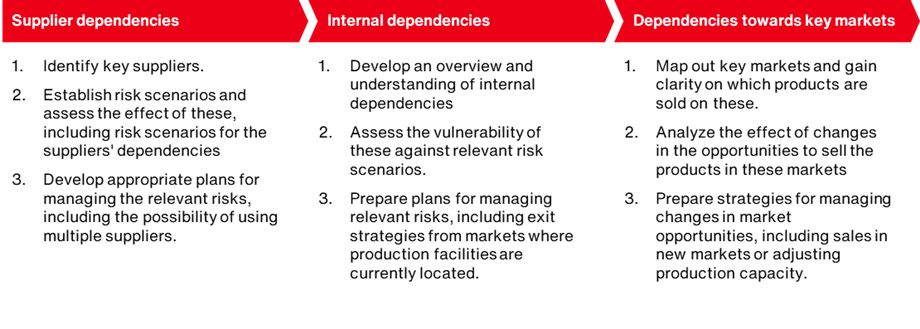
Blogindlæg -
US Presidential Election - What businesses should consider
The US presidential election is approaching, and the result might have significant consequences for global trade and the world order as we know it – regardless of who wins. The changes are already underway, and the outcome of the election can act as a catalyst that both accelerates existing changes and creates new ones – but at the same time also gives new opportunities.
Many companies are now preparing for a future with a new form of globalization and increasing polarization. For small open economies (such as the Nordics), the consequences can be significant. In a new analysis (Fragmentation of global trade could challenge the Danish economy), Danmarks Nationalbank discusses how geopolitical fragmentation and political polarization can affect the economy. A key conclusion is that existing supply chains as well as access to important components and raw materials may be challenged.
It is therefore important to prepare for the barriers that may arise in the coming years. New geopolitical alliances can change global trade patterns and challenge the rules-based globalization that has been the norm for many years.
As a cooperation it is therefore advantageous to initiate initiatives that can help understand the future challenges and contribute to their management. Here, one does not necessarily have to undertake extensive analyses or wait for the allocation of large resources; The most important thing is to start building an understanding of the challenges ahead.
One approach is to focus on 3 elements:
1. Supplier dependencies
2. Internal dependencies
3. Dependencies towards key markets
When assessing the dependencies in each of these areas, it may be relevant to include experiences from the past 5-6 years, where we have already experienced changes in tariffs, closed borders, travel restrictions and trade sanctions.
A simple approach to each of these areas is shown in the illustration below.
Three Central Elements

Supplier Dependencies
It is important to get a clear overview of suppliers and assess their risks. Mapping the interdependencies of suppliers, as well as their dependencies on critical raw materials and geographical factors, is essential to understand potential challenges. If you also have an overview of alternative partners, you will be well equipped to handle the challenges that may arise.
Internal Dependencies
Just as it is important to understand the supplier dependencies, one must also be aware of internal dependencies between production facilities, different departments, and IT and data matters. Recent events have shown that situations can arise quickly necessitating drastic adjustments and where access to one's own assets can be limited or impossible.
Dependencies towards Key Markets
Sales opportunities in key markets may also be affected and in some cases entire markets may be eliminated. In other cases, changes in national policies and changes in demand for certain goods and services may increase market opportunities. In these cases, one must be able to quickly adapt production and delivery capacities – both to be able to handle a possible reduction in sales opportunities, but also to be able to quickly penetrate new markets.
Overall, companies are potentially facing several challenges and a risk picture that is different from what they have been used to for many years. Therefore, it is crucial to prepare for the possible changes that may arise and be ready to both handle the challenges and take advantage of the opportunities. An early effort to map and understand the changes can therefore provide valuable insights into how best to navigate an increasingly complex and unpredictable global economy.


